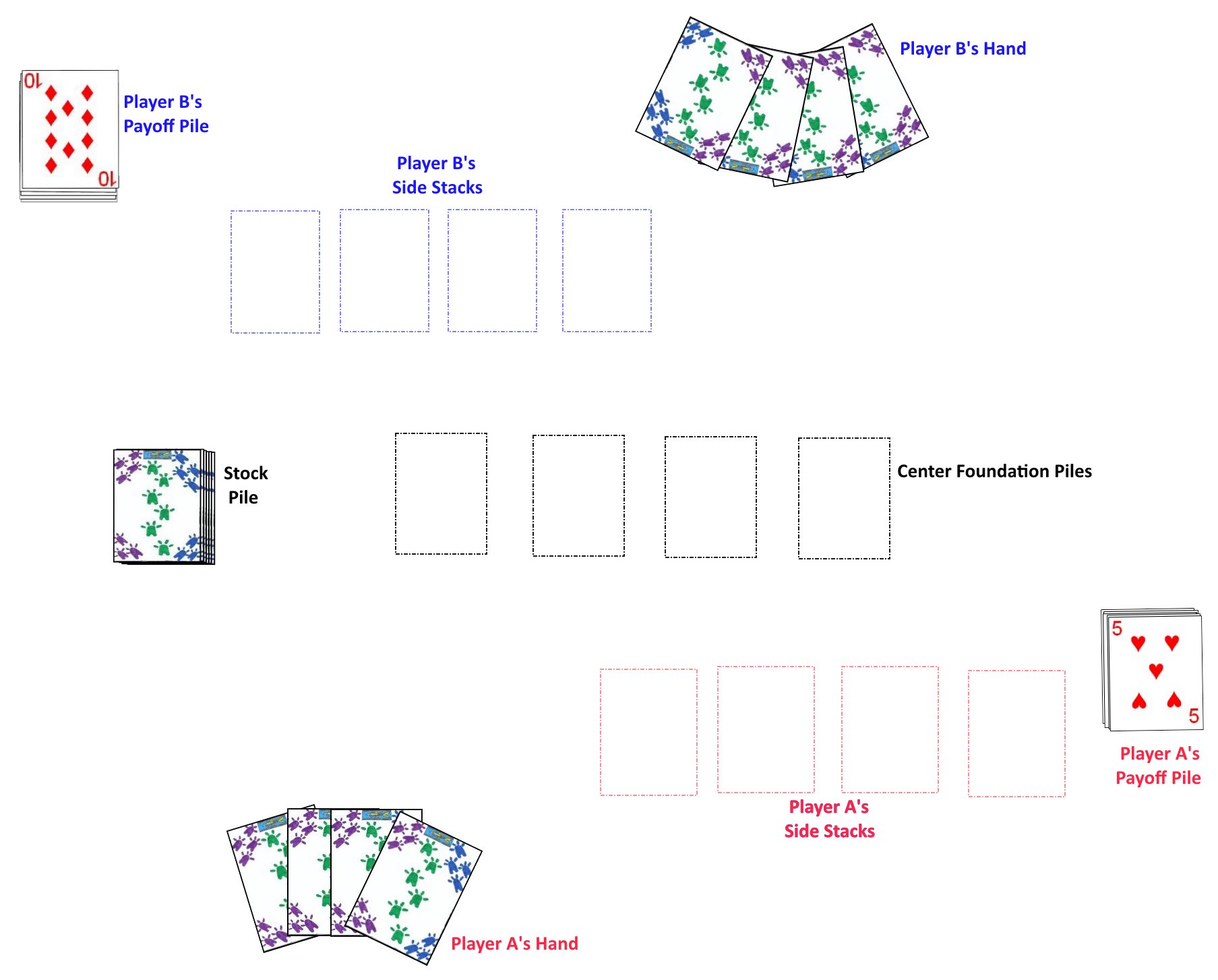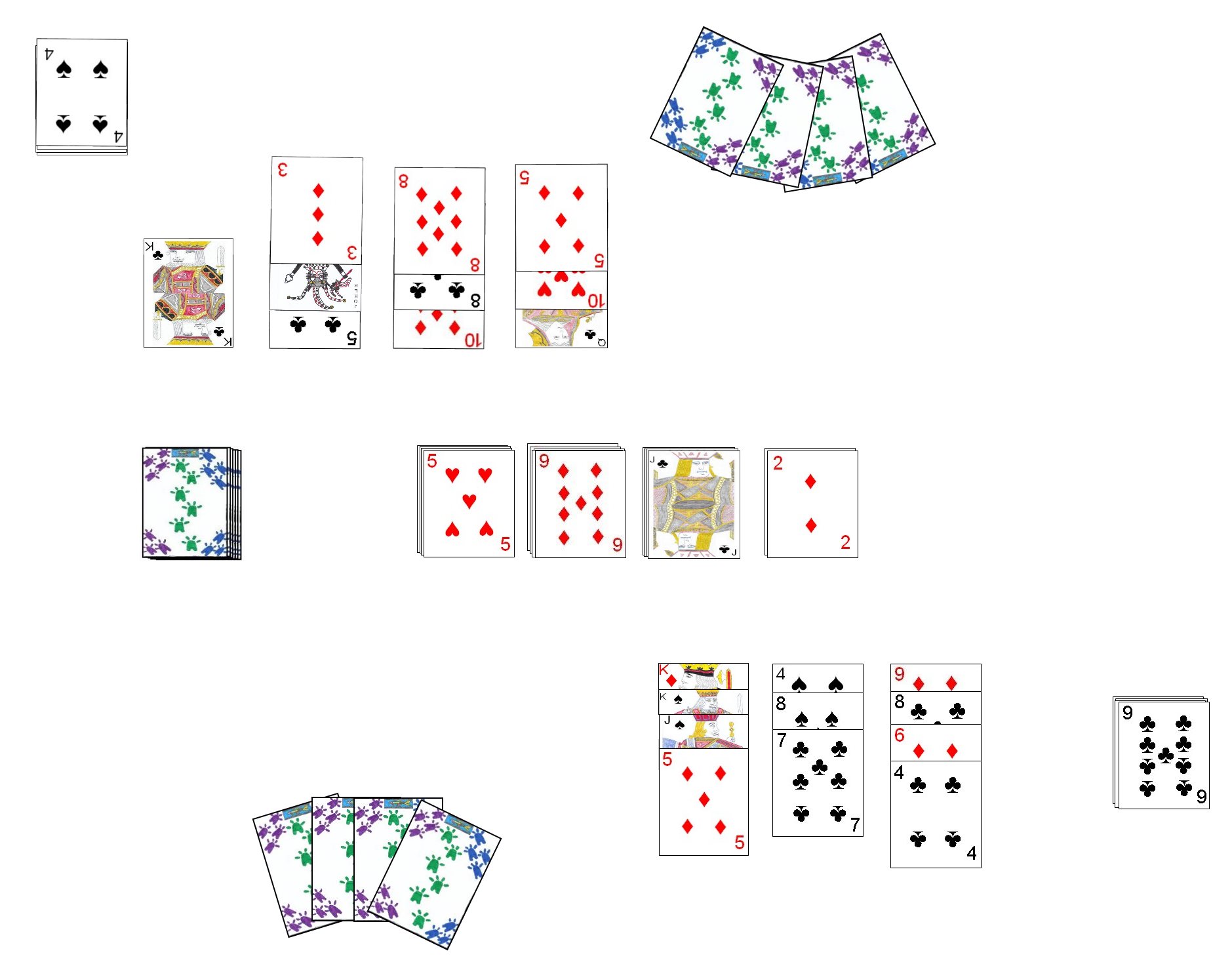- Cat and Mouse uses two standard 52 card decks with no Jokers added.
- Both decks are shuffled together to create one large deck consisting of 104 total cards.
- Kings are considered wild cards and can be used to replace any other card in the deck except an Ace.
- Since Kings are considered wild cards, the normal ranking of cards is as follows (from low to high); Ace, 2, 3, 4, 5, 6, 7, 8, 9, 10, Jack, Queen.
- One player, the dealer, is designated the Cat and his opponent the Mouse. These are simply titles for the players and do not alter the gameplay in any way.
- Each player's pay-off pile consists of 20 total cards.
- There may only be a total of three center play piles in play at any one time.
In all other respects this game is played identically to the standard variant of Spite and Malice.
|
|
|
 Spite and Malice is a two player card game popular in the Western Hemisphere. It has some similarities to double solitaire and other similar foundation building games. Although the playing rules are relatively simple, the game is considered by many players to require great skill to play well.
Spite and Malice is a two player card game popular in the Western Hemisphere. It has some similarities to double solitaire and other similar foundation building games. Although the playing rules are relatively simple, the game is considered by many players to require great skill to play well.
 Side Stacks: In addition to his pay pile and hand, a player also has four personal side-stacks. These are four special piles of cards owned by that player. At the end of each turn, if able, a player plays a card to one of his side stacks. To begin the game, the side stacks are empty, but as the game progress, the side stacks are built. Side stacks are only added to by a player at the end of his turn. However, during his turn, a player may always play the top card of any side stack to the central layout when able. A card can only be played, at the end of a player's turn, to the top of a side stack if it fulfills several criteria.
Side Stacks: In addition to his pay pile and hand, a player also has four personal side-stacks. These are four special piles of cards owned by that player. At the end of each turn, if able, a player plays a card to one of his side stacks. To begin the game, the side stacks are empty, but as the game progress, the side stacks are built. Side stacks are only added to by a player at the end of his turn. However, during his turn, a player may always play the top card of any side stack to the central layout when able. A card can only be played, at the end of a player's turn, to the top of a side stack if it fulfills several criteria.